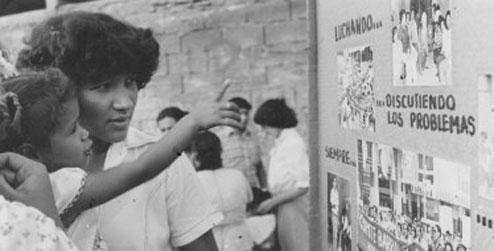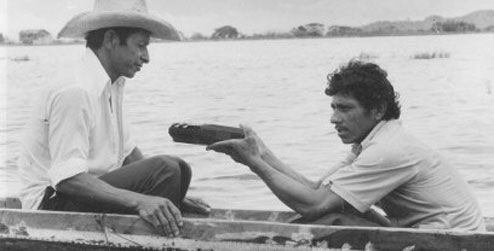
Ecuador changed my life, writes former development worker Brenda Lipson
August 1980 – touchdown in steamy Guayaquil, then a port city of 1.5 million people (now double that). The majority were immigrants from highland or rural coastal areas, who had arrived looking for work, and established precarious homes on stilts above swampland or perched on hillsides. I was 26, and was achieving my dream to live and work in Latin America.
The challenge I faced was to make sense of the new world around me. I would need to find out how much of my previous work experience – using visual media to help community groups in inner city London lobby for change – was relevant in this very different context.
My Ecuador work was to be for two years, but turned out to be seven. It changed my life.
Changes and challenges
Those seven years in the 1980s witnessed many changes and challenges within Ecuador. Called the ‘lost decade’ because of economic turmoil and hyperinflation, the country suffered many extremes, from extreme weather (major flooding in 1982), to extreme political events – the death in a plane crash of the first democratically elected President after a period of military rule; the kidnapping of another President; war with neighbouring Peru; and high social unrest with student protests, general strikes, guerrilla activity and consequent repression of social movements.
This vivid and vibrant environment brought into sharp relief the lives of the vast majority of the population. Working with the tools of my trade, I was privileged to gain insights into the multiple realities of Ecuadorean lives. Recording radio programmes about the impact of the ‘82 floods on small-scale rice producers and their families; producing educational tape/slide shows about the links between the economic crisis, international debt and subsequent measures taken by the IMF; producing photo-comic strips about the lives of shanty town dwellers to be used in discussion groups about what they could do to change their situation. These were the products of our efforts.
Identifying solutions
Working first with an Ecuadorean NGO and then with a union federation, the aim was to reinforce the efforts of the poor and the marginalised to respond to their situation. Facilitating an understanding of that situation was the critical first step, and the use of media was an innovative way of doing that. Seeing or hearing their situations reflected in radio programmes, tape-slide shows or comic strips triggered group discussions about the factors that caused the situation, and led on to the identification of solutions.
Identifying solutions meant working out what was in their power to change, and how best they should organise themselves to do that. So we also did training on how to run meetings, and on the role of leaders of organisations such as rice farmers’ cooperatives, workers unions, and shanty town associations: what today is known as civil society capacity building.
In time I moved on from that ‘coal face’ work of development, and became a development ‘professional’, working in various roles across Latin America and the Caribbean. But those seven years in Ecuador were never forgotten. They gave me the rich bedrock of images, voices, experiences which guide me in my daily work. I am forever grateful to CIIR/Progressio for giving me that opportunity to learn from the Ecuadoreans.

Brenda Lipson was a member of the board of trustees of CIIR/Progressio from 2002 to 2009. She now works as an independent consultant on civil society capacity building.
Photos by Brenda Lipson, illustrating some of the work that she was involved in.


